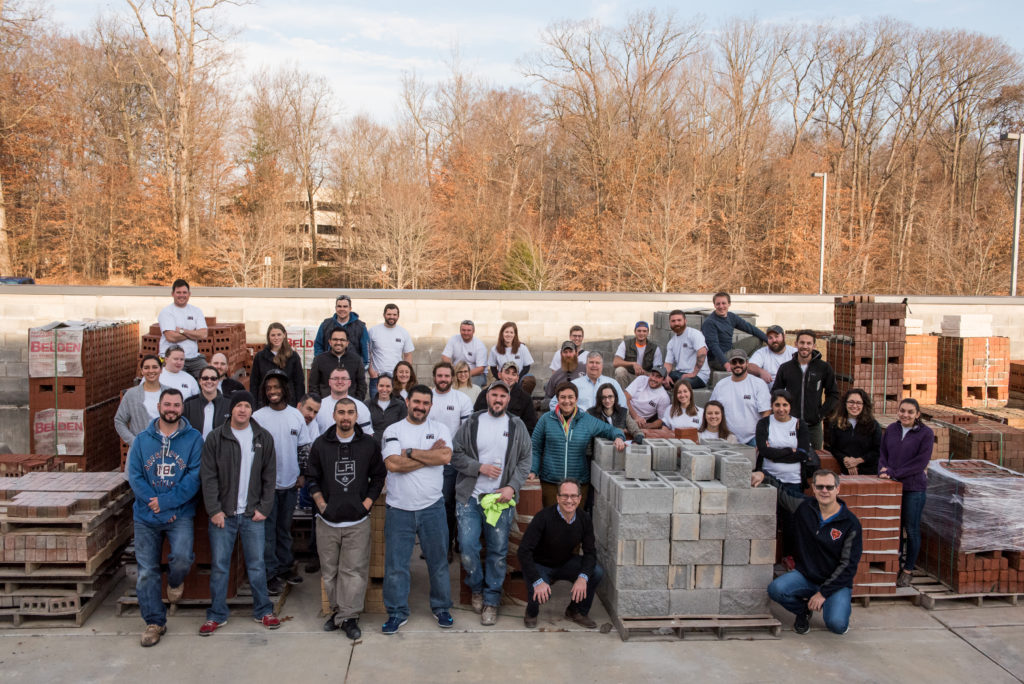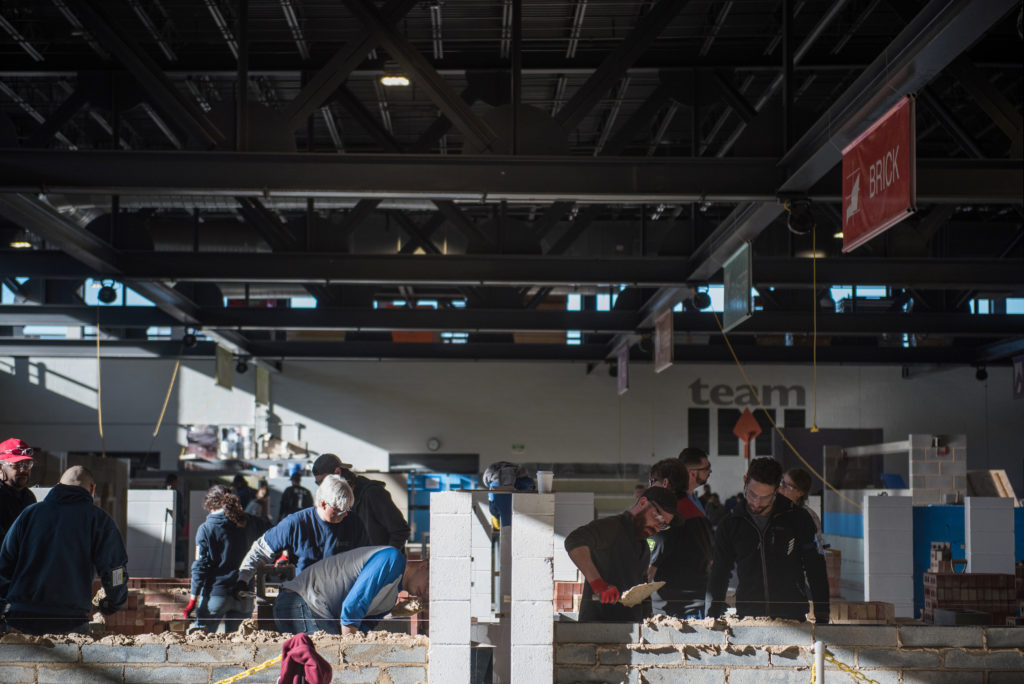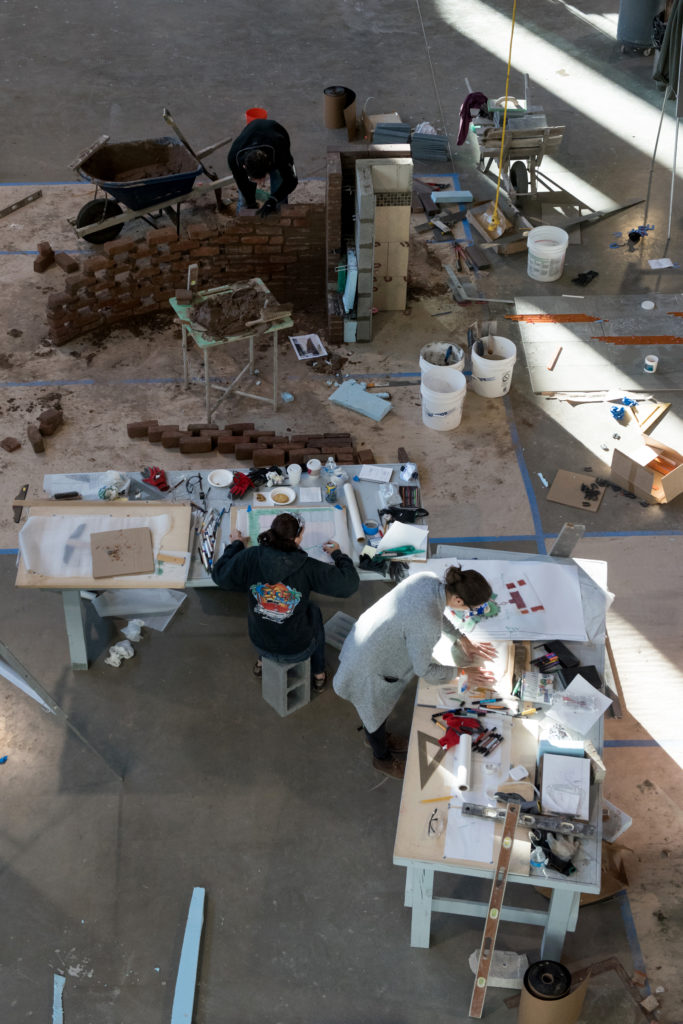
Kyle Elliott
LEED GA
Designer
Each fall the International Masonry Institute (IMI) brings designers and craftspeople from the masonry profession together for a weeklong, cross-disciplinary immersive training session focused on masonry construction. Last November, I had the opportunity to attend their Masonry Camp in Bowie, Maryland. This sponsored program brings multidisciplinary members from around the nation to learn, build, and live together in an effort to promote the value of building with masonry. As a junior designer, I felt very fortunate to attend and learned so much more from the experience than I initially anticipated.

2017 I.M.I. Masonry Camp attendees. Kyle is standing at the far right, in a black hooded sweater.
The primary reason I was looking forward to attending relates to my belief that there is a fundamental lack of adequate interdisciplinary collaboration and training within the building industry, and this workshop aims to bridge that sizeable gap by bringing the various professions within the industry together. The disconnect begins at the academic level, with students in design and construction fields diving deep into their professions while having little to no collaborative opportunities with students from other disciplines. They therefore begin to develop one-sided notions which become ever more embedded throughout the development of their careers. This leads to biased opinions and a tunnel-vision mentality within professionals, weakening the potential quality of projects and ultimately costing everyone both time and money. This kind of issue is hard to overcome once acquired, but programs like this one have the potential to tackle it at its root.
At Masonry Camp, we worked in cross-disciplinary teams for 12 to 14 hours every day, learning as much from one another as we did from the IMI instructors. Each morning started with a hefty breakfast, followed by technical lectures on a variety of topics, from basic material properties and movement joints to modular design and advanced masonry detailing. IMI brought in their most knowledgeable team members from around the country to teach us. We also took an architect-led tour of the Washington Cathedral, where we got to walk above the vaulted ceilings and on the roof for a close-up view of the masonry construction.

The I.M.I. Workshop
After the daily lectures we would move into the workshop and apply theory into practice with a series of hands-on building exercises throughout the day. Craftspeople would guide designers through the process and teach various methods and preferred construction techniques that they utilize in their professions. We built everything from a simple brick wall (which to my surprise, requires much more skill and finesse than I ever imagined) and proper masonry flashing, to perforated screen walls and rain-screen systems.
In the evenings after a delicious and hard-earned gourmet dinner, we would go back to the studio to focus on developing our design-build projects. This gave the craftspeople a chance to learn from the designers and to participate in the design process themselves. We would guide them through turning a basic idea into a concept, translating that concept into space, and shaping that space into architecture.
One of the most beautiful aspects of the whole experience was not only designing hand-in-hand with the craftspeople and incorporating their construction knowledge into the design from the very beginning, but also being able to walk from the design studio into the materials yard to explore and experiment with the various materials at our disposal. For a designer, the ability to immediately find and interact with the materials one is envisioning is priceless.

Design-Build Project Development
The biggest challenges that we faced as a group, both in the workshop and in the studio, related to the preconceived notions previously mentioned. As a designer, I found it challenging to step away from the ideal vision of a concept and embrace the imperfections bound to the construction process. Similarly, craftspeople struggled with the time-consuming and layered steps of the design process.
Being exposed to these challenges as a team helped us all to better understand the necessary processes we each are tasked with in our professions. On a personal level, it reminded me of the material and construction limitations that we tend to forget about while designing. By incorporating these technical considerations at the outset of a project, I am able to develop a cleaner and more realistic design intent that will be more effectively achieved through the construction process. Incorporating more opportunities for collaborative learning, just like IMI Masonry Camp, at an early career stage would benefit not only the professionals involved, but most importantly, the building industry as a whole.
To learn more about IMI’s Masonry Camp visit http://imiweb.org/masonry-camp.
